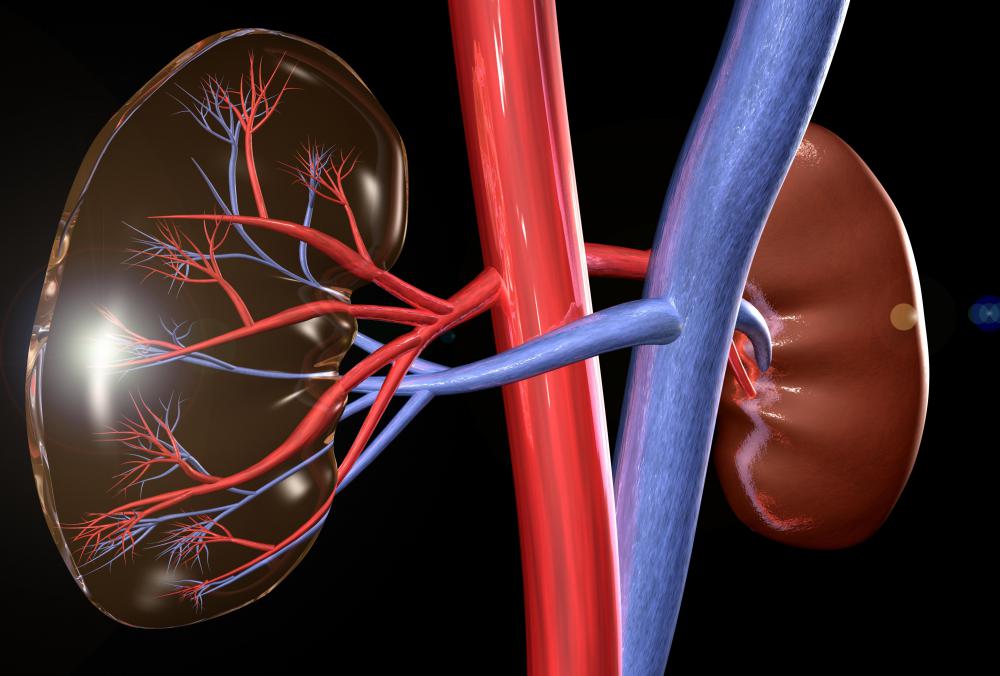At WiseGEEK, we're committed to delivering accurate, trustworthy information. Our expert-authored content is rigorously fact-checked and sourced from credible authorities. Discover how we uphold the highest standards in providing you with reliable knowledge.
What is a Radical Nephrectomy?
Cancer can be devastating to a body. Many times, one of the only successful methods to treat or halt the progression of the disease is the complete removal of the tumor as well as the organs and tissues associated with it. Such surgery usually is called radical. A radical nephrectomy is the removal of a kidney, the ureter, the surrounding tissues, lymph nodes, and the adrenal gland, usually due to cancer or other severe kidney diseases. This surgery can be used as an option to rid the body of cancer or to provide more comfort for a patient in whom the cancer is incurable.
A radical nephrectomy is a major surgery, usually involving general anesthesia, to remove a major organ from the body. Removing one kidney may not result in a drastic change in a person’s life, as most individuals have two. If the patient has a weak kidney or if he has already had a kidney removed, however, the operation could result in the patient having to undergo dialysis. Before performing a radical nephrectomy, a doctor typically will discuss all available options and help the patient decide which one is right for his situation.

There are generally two types of radical nephrectomy offered as options for treatment. Open nephrectomy involves cutting open the patient so the surgeon can see the organs as he is removing them. This type of surgery is the more traditional version. Candidates for this type of surgery include those who have tumors larger than four inches (10 cm). Other patients who may be suited for this type of surgery are those who have had previous surgeries that left internal scarring.

The second type of radical nephrectomy is a minimally invasive procedure called laparoscopic radical nephrectomy. This surgery does not involve an incision as large as the one needed for an open radical nephrectomy. Rather, several small incisions are made. In the first incision, a camera is inserted so the doctor can see what he is doing. Other incisions are used to allow the surgical instruments access to the organ. The surgeon can then detach the kidney and any other tissues he is removing and extract them through another incision.

As with all operations, there are risks as well as benefits associated with both open and laparoscopic radical nephrectomy surgeries. In both cases, the patient will have to undergo general anesthesia, which may be associated with the risks of brain damage, heart attack, or stroke. In some procedures, nerves could be damaged, resulting in back issues. All risks should be discussed with a doctor before a patient undergoes the procedure. The doctor can help a patient decide what risks he is willing to take in order to get rid of or control the cancer.
AS FEATURED ON:
AS FEATURED ON:













Discuss this Article
Post your comments